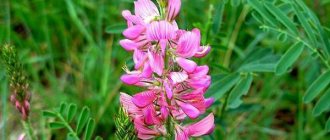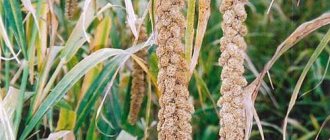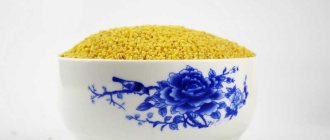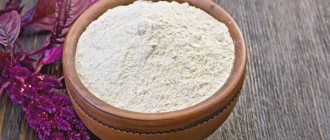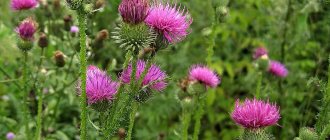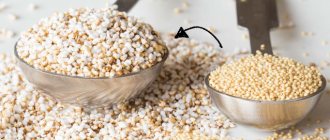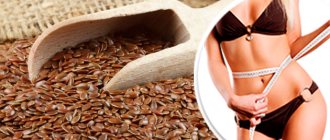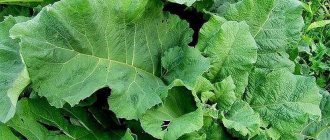What is cumin?
Cumin is a spice in the form of dark brown crescent-shaped seeds, with several ridges running along the surface, with an islandy-sweet and slightly peppery aroma.
Cumin seeds are common in European and Mediterranean cooking, and their complex flavor lends itself to both savory and sweet dishes. It is an important component of most traditional rye bread recipes.
You'll need cumin seeds if you plan to make delicious sauerkraut, Polish sausage, or Tunisian harissa.
It can also be found in desserts, alcoholic beverages, and as an ingredient in cosmetic products.
What cumin and its seeds look like - photo
Cumin seeds are grayish-green or light brown fruits up to 6 mm in size with pronounced ribbing.
general description
The genus Caraway (Carum) includes more than 30 plant species distributed throughout the Northern Hemisphere. Only one is grown as a spice – Cumin (Carum Carvi).
It belongs to the Umbelliferae or Apiaceae family, which also includes other well-known spices such as fennel, cumin, anise and dill.
It is a low (50-60 cm) biennial plant with finely dissected leaves and a branched stem ending in umbels of inflorescences with tiny pinkish-white flowers or fragrant fruits.
The greens and roots of cumin are also edible and quite aromatic, but dried seeds, which form in the second year of the plant’s life, are popular as a seasoning.
Cumin seasoning and its beneficial properties
Latin name: Cárum cárvi Folk names: field anise, wild anise, kmin, timon, kimin, anise, gunba, goats, ganus Family: Apiaceae Spice: seeds Collection of seeds: Blooms from late June-July to September. The fruits are harvested in September.
Brief botanical information - description of the plant
Common caraway is a biennial plant, a species of the Cumin genus of the Apiaceae family. Used in cooking and medicine. Wikipedia
In the wild, it is distributed in Europe, Asia and the subtropical regions of Pakistan and India. It is grown everywhere in a cultivated form; the main exporters are: Holland, Germany and Poland.
Main morphological characteristics of the plant:
- An annual or biennial herbaceous plant with straight hollow stems, up to 1.5 meters high.
- The leaves are double or triple pinnate.
- Inflorescences are complex umbrellas.
- During the flowering period, the caraway plant produces partially staminate, bisexual flowers. They emit an intense aroma.
- The seeds are characterized by an oblong shape, with blunt, pronounced ribs. They have the smell and taste of anise and are a spice.
What types of cumin are there?
There are several types of cumin:
- black cumin,
- green cumin
- caraway seeds
If the recipe does not specify which type is meant, then it means caraway seeds.
Photo of caraway seeds
Chemical composition of seasoning
Seasoning caraway seeds contains many biologically active substances, among which the most useful are proteins, fatty oils, flavonoids, and tannins.
High concentrations of essential oil were noted, the main active components of which are: D-carvone ketone (from 50-85%), which has a burning taste, and D-limonene (20-50%).
It also contains carvacrol, quercetin, carvone, limonene, which are very valuable for the human body.
A significant amount of ascorbic acid is found in caraway roots.
This chemical composition is unique and is preserved even after heat treatment of the spice.
Cumin and cumin - what is the difference between them
Cumin is sometimes confused with cumin; many mistakenly believe that they are the same thing; the differences between these two spices are clearly presented in the photo:
Zira is more pungent in taste, lighter in color, and the seeds are larger than those of cumin. The aroma of cumin is also different from cumin: it is stronger and spicy due to the content of essential oils.
Jeera is the dried seed of the Cumin cyminum plant, which resembles parsley in appearance. The seeds are used both whole and crushed in cooking in many countries. You will learn more about cumin from this publication on pripravkino.ru.
Cumin seeds from the Carum carvi plant are crescent-shaped, long, and have five pale ribs.
Cumin is more common in German cuisine, where it is usually used whole rather than ground. It has an anise-like aroma and flavor that is popular in breads, especially rye, as well as cheeses, sauerkraut, and root vegetables.
Processing the area for planting cumin
Growing cumin should take place in a bright place, as it is quite light-loving.
The plant must be protected from dry wind and soil moisture. Cumin is very sensitive to soil moisture. Therefore, in areas where groundwater actively flows, it is better to build high beds for growing cumin from seeds. It is recommended to plant caraway seeds next to dill, parsley, carrots and other members of the Umbelliferae family. In addition to umbrella plants, caraway seeds can be planted with tomatoes, cucumbers, cabbage, onions, potatoes, zucchini, beans and other plants from the legume family. It is recommended to begin preparing the site for growing caraway in early autumn. The list of planting activities includes digging up the soil and eliminating weeds.
It is recommended to grow caraway seeds only after a well-fertilized crop, which was fed on time and with plenty of organic matter. In this case, only mineral fertilizers are added to the future bed for caraway seeds:
- 10-15 grams of ammonium nitrate;
- 8-12 grams of superphosphate;
- 3-6 grams of potassium cola.
If there is not enough fertilizer in the ground from previous crops, during digging you can add humus or compost in a ratio of 3-4 kg/m.
Chemical composition
Cumin seeds have high nutritional value as they contain many health-promoting nutrients, minerals, vitamins and antioxidants.
Nutritional value of cumin seeds (Carum carvi) per 100 g.
| Name | Quantity | Percentage of daily value, % |
| Energy value (calorie content) | 333 Kcal | 17 |
| Carbohydrates | 49.90 g | 38 |
| Protein | 19.77 g | 35 |
| Fats | 14.59 g | 48 |
| Dietary fiber (fiber) | 38 g | 100 |
| Folates | 10 mcg | 2,5 |
| Niacin | 3.606 mg | 23 |
| Pyridoxine | 0.360 mg | 28 |
| Riboflavin | 0.379 mg | 29 |
| Thiamine | 0.383 mg | 32 |
| Vitamin A | 363 IU | 12 |
| Vitamin C | 21 mg | 35 |
| Vitamin E | 2.5 mg | 17 |
| Sodium | 17 mg | 1 |
| Potassium | 1351 mg | 29 |
| Calcium | 689 mg | 69 |
| Copper | 0.910 mg | 101 |
| Iron | 16.23 mg | 203 |
| Magnesium | 258 mg | 64.5 |
| Manganese | 1,300 mg | 56,5 |
| Phosphorus | 568 mg | 81 |
| Zinc | 5.5 mg | 50 |
| Beta carotene | 189 mcg | — |
| Cryptoxanthin | 58 mcg | — |
| Lutein-zeaxanthin | 205 mcg | — |
Medicinal properties of cumin seeds
Cumin is used primarily as a spice and food flavoring, but is also sold in dietary supplement form for its numerous health benefits.
Cumin seeds are rich in fiber: 100 g of seeds contain 38 g of fiber, which is 100% of the daily recommended intake. Soluble as well as insoluble dietary fiber increases the bulk of food and helps prevent constipation by speeding up its passage through the intestines.
Fiber also absorbs toxins that may be in food, and thus helps protect the colon lining from cancer. Additionally, dietary fiber binds to bile salts (derived from cholesterol) and reduces their reabsorption in the colon and thus helps lower blood cholesterol levels.
Cumin contains healthy essential oils: carvone, limonene, carveol, pinene, cumic aldehyde, furfural and thujone, which have antioxidant, digestive, and antimicrobial properties.
The seeds contain flavonoid antioxidants such as lutein, carotene, cryptoxanthin and zeaxanthin. These compounds remove harmful free radicals from the body and thereby protect against cancer, infection, aging and degenerative neurological diseases.
Cumin is an excellent source of minerals such as:
- Copper is an important element for the process of hematopoiesis in the body and is involved in the synthesis of red blood cells and white blood cells.
- Iron is necessary for the formation of red blood cells.
- Zinc regulates many vital functions in the body, including growth, development, digestion and sperm production.
- Potassium is an electrolyte that helps the heart work efficiently and maintain both healthy blood pressure and stable heart function.
- Manganese is used by the body as a co-factor for the powerful antioxidant enzyme superoxide dismutase.
- Calcium is important for normal permeability of cell membranes and blood vessels.
- Selenium stimulates the formation of antibodies, white blood cells, and is involved in the production of red blood cells.
- Magnesium is the main participant in energy processes, neuromuscular transmission and the mechanism of muscle contraction.
Caraway seeds contain many vital vitamins: A, E, C, as well as group B - thiamine, pyridoxine, riboflavin and niacin.
Top 10 Health Benefits of Cumin Seeds
- Cumin helps digestion. As already mentioned, its seeds are rich in fiber. Adding enough fiber to your diet is vital for proper digestion. Thanks to this, cumin can prevent common stomach problems including upset stomach, bloating, constipation and diarrhea.
- Cumin promotes weight loss. High fiber foods are not only good for digestion, but they are also believed to be effective for weight loss. In the case of cumin seeds, there is scientific research that supports their benefits in this regard.
- Cumin supports heart health. Fiber-rich foods reduce LDL cholesterol levels in the body. Reducing total and LDL cholesterol, in turn, reduces the risk of heart disease and stroke. The natural antioxidants found in cumin seeds also play a vital role in heart health by neutralizing the damaging effects of free radicals.
- Cumin is beneficial for the health of women and men. Many women suffer from pain during menstruation. Cumin seeds are an affordable, natural method to relieve cramps. They can be brewed as tea, cooled and drunk at any convenient time. In men, cumin prevents impotence and stimulates sperm production.
- Cumin helps with insomnia. The reason these seeds improve sleep quality and duration is that they contain magnesium.
- Stimulates lactation. Cumin seeds are a food that promotes breast milk production. They are safe for children and can be used daily, but it is still better to consult a doctor first.
- Gets rid of parasites. Cumin contains the compound carvone, which has anthelmintic properties. Regular consumption of seeds prevents the body from becoming infected with parasites, since they kill both adult helminths and their larvae.
- Cumin has diuretic properties. Regular urination helps prevent stone formation and lower blood pressure.
- Cumin seeds support eye health. This beneficial property is explained by the content of vitamin A, as well as lutein and zeaxanthin. These carotenoid antioxidants slow down premature macular degeneration, help keep the optic nerve healthy, and reflect some UV rays, thereby protecting the eyes from damage.
- Cumin helps relieve cough. Its expectorant properties help break down and release mucus from the lungs and directly suppress the need to cough by acting on the brain. The expectorant properties are most useful for hacking coughs, while its antitussive properties are best for dry coughs.
Useful properties and benefits of black cumin seeds for the body
In ancient Rome, the plant was called a panacea. This is not surprising, because it has a large number of different beneficial properties. Seeds affect all biological processes of the body. Including:
- strengthen the immune system,
- restore vital energy,
- fight inflammation
- destroy viruses and bacteria,
- stimulate regeneration processes and so on.
This benefit is due to the large amount of amino acids, B vitamins, calcium, iron, phosphorus, and folic acid. The beneficial active components contained in the composition take part in the production of hormones and bile acid.
The seeds are actively used in oriental medicine for sunnah treatment of many ailments, including diabetes and oncology. It has been proven that thymoquinone, which is included in the composition, gradually reduces the number and size of tumors and promotes the growth of healthy bone marrow cells.
Of course, to obtain a lasting effect, you need to use the seeds for a long time. But it becomes possible to forget about asthmatic status, arthritis, and migraines forever. The beneficial properties of black cumin seeds will also help those women who practice breastfeeding. On the one hand, they normalize metabolic processes, and on the other, they increase milk production.
It has been proven that the beneficial properties of this product can also cope with diseases of the nervous system. There is a positive effect in Parkinson's disease. The ingredients protect neurons from toxic damage, reducing their death. People who take this product note that over time, their emotional state becomes more equal, their level of resistance to stress increases, and their anxiety decreases.
The benefits of using the product for the body of women, men and children are obvious. For prevention, the seeds are recommended to be consumed by healthy people. The plant will strengthen the immune system and human health, protect and rid the body of muted diseases.
Contraindications (harm) and side effects from cumin seeds
Cumin, like anything consumed in excess, can cause harm to the body. Too much of this spice sometimes leads to heartburn and causes belching.
Pregnant women should be careful with this spice, especially in the first months.
Breastfeeding women should consult their gynecologists before consuming cumin seeds to stimulate lactation.
For diabetics, it is recommended to check your blood sugar levels before consuming cumin as this spice tends to lower your blood sugar levels.
Use of cumin seeds in cooking
Whole cumin fruits are added in the middle of the cooking process or 10-15 minutes before cooking, placing them in a cloth bag and then removing them.
If a recipe calls for ground seeds, it is best to grind them immediately before use.
Cumin is most often used in baked goods such as rye bread, buns and cookies, and here are a few other dishes where it is added:
- It is an important flavoring agent for some cheeses, such as Danish Havarti and Swiss Tilsiter.
- It is used for the production of alcoholic drinks aquavit and schnapps.
- In Indian cooking, cumin seeds are used in curries and dals.
- In North African countries such as Morocco and Algeria, they are added to roast lamb.
- Ground cumin goes well with fried potatoes, broccoli, carrots, and beets.
- It is added to dishes made from legumes or cabbage in any of its forms.
- Good as a marinade for fish and lamb mixed with garlic and lemon juice.
- Cumin goes well with all spices, but works best with herbs and spices from its own family - dill, coriander, cumin.
- Great for recipes containing cabbage, feta cheese or cheese.
- Caraway seeds are added to some sauerkraut recipes.
- Cumin is often added to Hungarian goulash along with paprika.
- Along with other spicy seasonings, cumin seeds are often added to sausages and meat dishes.
- This seasoning is used for vegetable salads and grilled vegetables.
1 teaspoon contains approximately 3.5 g of cumin seeds. One pinch contains about 0.5 g.
How much ground cumin to add to dishes:
- For 1 kg of meat (for goulash, roast) - 1.5 tsp. (5-7 g)
- For 1 kg of minced meat – 1 tsp (5 g)
- For 1 kg of flour (for baking bread, etc.) – 2 tsp. (10 g)
- For 1 kg of sauerkraut – 1 tsp.
Cumin grown in warm climates has a more intense aroma, as it contains 2 times more essential oils than that grown in cool climates, so you will need half as much of it.
Recipe for delicious sauerkraut with caraway seeds - video
Application for weight loss
The medicinal properties of cumin allow it to be used in dietetics. Oil and seeds are added to dishes in small quantities to improve metabolism, improve the absorption of fats and proteins, eliminate gastrointestinal dysfunction, and reduce appetite. The plant helps eliminate the effects of allergies and cope with diarrhea. If the patient follows a strict diet, then the seeds, due to the content of phytohormones, support the functioning of the thyroid gland.
Article on the topic: CA-125 blood test for ovarian cysts
To speed up metabolism and prevent intestinal parasites, it is useful to drink a glass of water with lemon juice or a slice of lemon, seasoned with a teaspoon of cumin, in the morning. The course of taking the cocktail lasts 3-6 months. Nutritionists advise those losing weight to season salads with black cumin oil and add its seeds in small quantities to food.
How to replace cumin seeds in a recipe
If cumin seeds aren't easy to find where you live or are out of stock, consider any of these effective substitutes. Most alternatives can be found in your local grocery store or in the spice racks in your home.
- Anise seeds. This spice is from the same family, with a very similar smell. Note that anise seeds work best as a cumin substitute in baked goods (breads and cookies). Their strong flavor can withstand baking without becoming bitter. When using anise seeds instead of cumin, use less than the recipe calls for.
- Fennel seeds. These two spices are so similar in taste and appearance that they are often mistaken for each other. Fennel seeds are best used as a substitute for cumin seeds in curries, stews and the like that require long cooking times. In these dishes, you also need a spice that can compete with other strong flavors. If you are using fennel seeds instead of cumin, use the same amount.
- Dill seeds are another way to get a cumin-like flavor. Dill belongs to the same family, which explains the similarity in taste and smell. Its seeds are ideal for use in pureed soups and for cooking cabbage.
- Star anise (star anise) is another spice that can be used to replace cumin. Its powerful scent can be overwhelming, so add a little at a time.
Scientific studies have confirmed that cumin has health benefits, as it has medicinal properties, but possible harm must also be taken into account (contraindications). Although it is too early to recommend cumin supplements as standard treatment, including this spice in your diet will be beneficial as it contains a large amount of nutrients.
Caring for caraway seeds
The initial care of cumin crops before emergence is to destroy the crust with a hoe. As soon as the first shoots appear, layer and weed the weeds in the rows. Next, it is customary to cultivate the crops with tractor cultivators. In the first year of its growth, cumin weaves small rosettes of leaves, almost without shading the soil; weeds actively appear in the rows, and after rains the soil becomes very compacted.
Despite this, during the active growing season, the sprouts are treated with tractor cultivators no less than 5-6 times over the entire period. If sowing was carried out in the summer, the need for inter-row cultivation is significantly reduced - during the growing season, 2-3 loosening is enough. For dense types of sowing, when 2-3 leaves appear, a breakthrough is made and the sprouts are separated at a distance of 9-13 cm from each other.
When cumin is planted in open ground without fertilizer and other similar actions, the plants grow small and are highly susceptible to diseases and pests.
During the first year of active growth of cumin, you need to feed the plant 2-3 times:
- the first feeding consists of mineral fertilizer, a good option would be to add it during breakthrough;
- the second feeding is done in late autumn with fertilizer with phosphorus and potassium;
- The third feeding can be carried out at any time if necessary.
For maximum efficiency, fertilizer is laid to a depth of 8-10 cm in the row spacing. The first spring loosening of the soil is combined with spring fertilizer.
The first harvests begin when 50-60% of the seeds turn brown. Immediately tie the cut cumin into small sheaves and place them in a row to dry. The dried sheaves are quickly ground.
Caraway seeds can also be collected using a combine, but only on the condition that the planted varieties do not fall off when harvested. As a rule, I start this type of collection a little later, namely when most of the seeds turn brown. You should also know that cumin seeds ripen extremely quickly - in 2-3 days. If you are late with harvesting, this will lead to the loss of a large part of the crop.
When storing cumin, the humidity in the room should not exceed 9-12%, otherwise it will quickly deteriorate.

